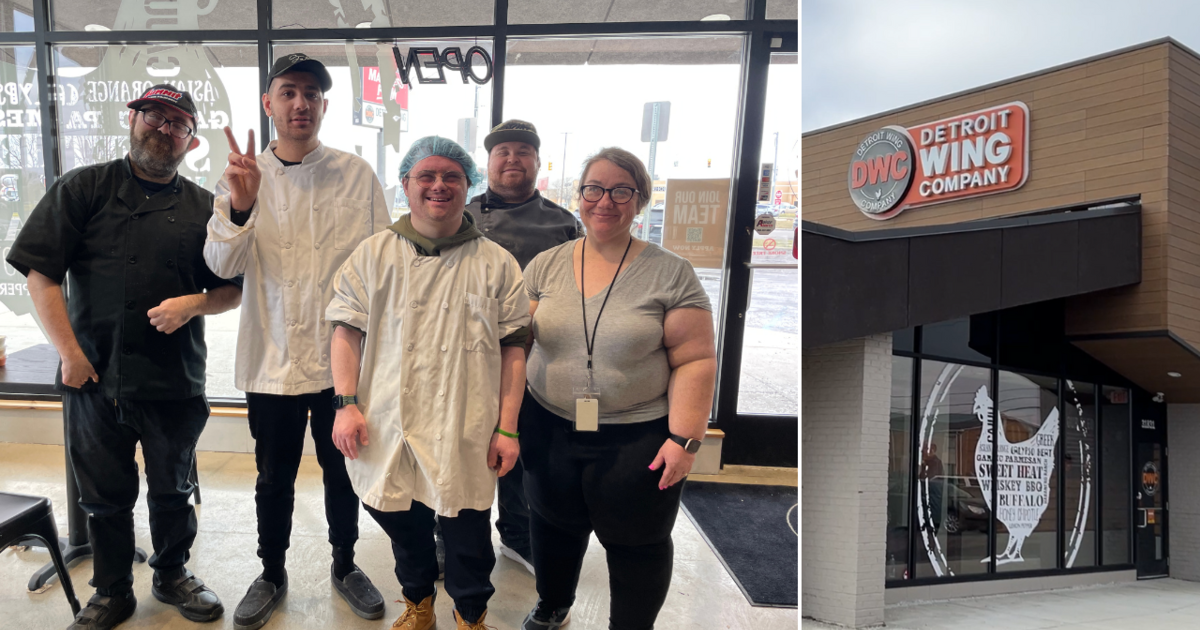Feeling Itchy? Detroit Among Most Bed Bug-Infested Cities In U.S.
DETROIT (WWJ) - Detroit is apparently a top city for hitchhikers of the creepy, crawly variety.
According to pest control company Orkin, Detroit ranks 7th on its annual list of Top 50 Bed Bug Cities. The ranking is based on the number of bedbug treatments Orkin performed from from Dec. 1, 2015 – Nov. 30, 2016
Orkin released its Top 50 Bed Bug Cities list today and Detroit ranks #7. The list is based on the number of bed bug treatments Orkin performed in each metro area from Dec. 1, 2015 – Nov. 30, 2016.
The silver lining here is Detroit is actually moving down the list. Just a few years ago, in 2014, Orkin ranked Detroit as the second-most bed bug-infested city.
Detroit isn't the only Michigan city in the top 50, either; the Grand Rapids-Kalamazoo-Battle Creek area came in 27th place.
Bed bugs, which only need blood to survive, can be found anywhere people are -- from upscale homes and hotels to schools and libraries to low income housing -- and people often bring them inside unknowingly on belongings.
As for the city with the worst bed bugs, that honor goes to Baltimore -- followed by Washington, D.C., Chicago, New York and Columbus, Ohio.
Orkin's Top 50 Bed Bug Cities -- 2016
- Baltimore
- Washington, D.C.
- Chicago
- New York
- Columbus, Ohio
- Los Angeles
- Detroit
- Cincinnati
- Philadelphia
- San Francisco-Oakland-San Jose
- Richmond-Petersburg, Va.
- Raleigh-Durham, N.C.
- Cleveland-Akron-Canton, Ohio
- Indianapolis
- Dallas-Ft. Worth
- Atlanta
- Houston
- Buffalo, N.Y.
- Charlotte, N.C.
- Norfolk-Portsmouth-Newport News, Va.
- Knoxville, Tenn.
- Denver
- Nashville, Tenn.
- Pittsburgh
- Greenville-Spartanburg, S.C.-Asheville, N.C.
- Phoenix
- Grand Rapids-Kalamazoo-Battle Creek, Mich.
- Boston
- Milwaukee
- Champaign-Springfield-Decatur, Ill.
- Hartford-New Haven, Conn.
- Dayton, Ohio
- Omaha, Neb.
- Seattle-Tacoma
- Tampa-St. Petersburg, Fla.
- Charleston-Huntington, W.Va.
- St. Louis
- Cedar Rapids-Waterloo-Dubuque, Iowa
- Myrtle Beach-Florence, S.C.
- Syracuse, N.Y.
- Louisville, Ky.
- Greensboro-High Point-Winston Salem, N.C.
- Lexington, Ky.
- Orlando-Daytona Beach-Melbourne, Fla.
- Kansas City, Mo.
- Miami-Ft. Lauderdale, Fla.
- Salt Lake City, Utah
- Honolulu, Hawaii
- Las Vegas
- Portland, Ore.
Overall, Orkin says more people are now being affected by bed bugs in the United States than ever before. According to a 2015 "Bugs without Borders Survey" by the National Pest Management Association, nearly all (99.6 percent) of pest professionals nationwide have treated bed bugs in the past year.
Bed bugs can be difficult to detect and treat because of their small size and ability to survive up to a year without feeding. They are about the size of an apple seed when fully grown, and can hide around seams of a mattress, behind headboards and in cracks and crevices, usually within a five-foot radius of the bed. The first signs of a bed bug infestation are often the bed bugs themselves or small dark stains bed bugs can leave behind.
To help detect and prevent bed bugs, Orkin recommends homeowners and travelers do the following:
• Inspect your home for signs of bed bugs regularly. Check locations where bed bugs hide during the day, including mattress seams and behind baseboards, headboards, electrical outlets and picture frames.
• Decrease clutter around your home to make bed bug inspections and detection much easier.
• Inspect all secondhand furniture before bringing it inside your home.
• Dry potentially infested bed linens, curtains and stuffed animals on the hottest temperature allowed for the fabric.
During travel, remember the acronym S.L.E.E.P to inspect for bed bugs:
• Survey the hotel room for signs of an infestation. Look for black or brown spots on any furniture.
• Lift and look in bed bug hiding spots: the mattress, box spring, bedskirt and other furniture, as well as behind baseboards, pictures and even torn wallpaper.
• Elevate luggage away from the bed and wall. The safest place is in the bathroom.
• Examine your luggage while repacking and once you return home from a trip.
• Place all dryer-safe clothing from your luggage in the dryer for at least 15 minutes at the highest setting after you return home.



